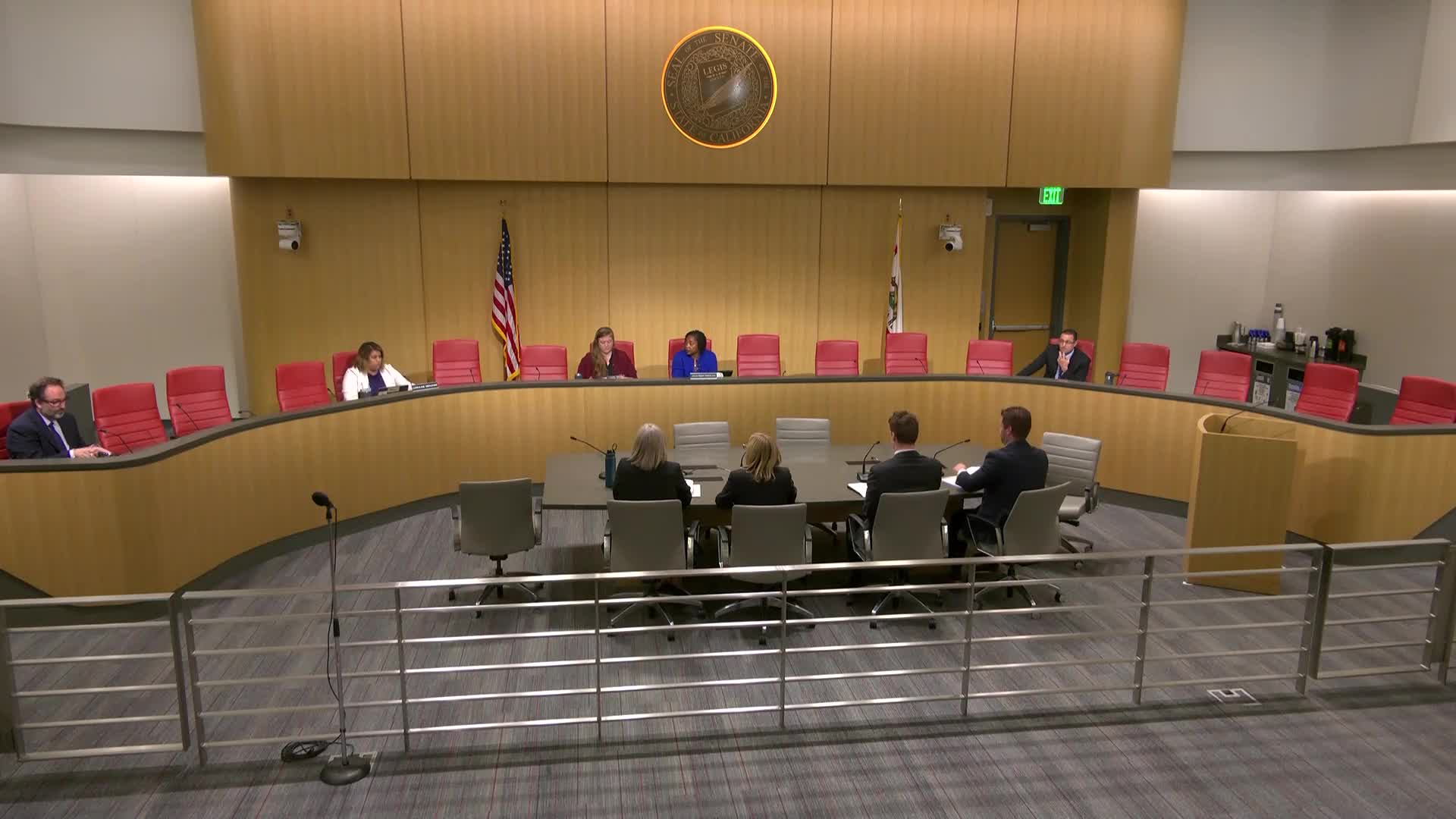HCAI outlines $581M California health budget focused on affordability and access
May 01, 2025 | California State Senate, Senate, Legislative, California
This article was created by AI summarizing key points discussed. AI makes mistakes, so for full details and context, please refer to the video of the full meeting. Please report any errors so we can fix them. Report an error »

The California Senate Budget and Fiscal Review Subcommittee No. 3 on Health and Human Services convened on May 1, 2025, to discuss significant budget proposals and initiatives aimed at improving healthcare access and affordability across the state.
Elizabeth Landsberg, director of the Department of Health Care Access and Information (HCAI), presented a proposed budget of $581 million for the upcoming fiscal year, reflecting a $103 million reduction from the current budget. This budget aims to enhance equitable access to quality healthcare for all Californians through various programs focused on facilities, workforce, data, and affordability.
A key highlight of the meeting was the introduction of the Office of Health Care Affordability (OCA), established to tackle the rising costs of healthcare that have prevented many Californians from seeking necessary medical care. Landsberg noted that half of Californians reported avoiding healthcare due to high costs. The OCA's primary goals include slowing healthcare spending growth, promoting a high-value healthcare system, and assessing market consolidation, which significantly drives up costs.
The OCA has set ambitious spending targets, starting with a 3.5% growth rate in 2025, decreasing to 3% by 2029. These targets are designed to ensure that healthcare spending does not outpace the growth of median household income, addressing the affordability crisis head-on.
In a notable move, the board also established specific spending targets for high-cost hospitals, which have been identified as charging significantly more than the average. The board unanimously voted to set a lower spending growth target of 1.8% for these hospitals in 2026, decreasing to 1.6% by 2029. This decision follows extensive public testimony and discussions about the financial practices of these institutions.
The meeting underscored the state's commitment to reforming healthcare affordability and access, with ongoing stakeholder engagement and a focus on improving health equity and quality alongside cost management. As California navigates these challenges, the outcomes of these initiatives will be closely monitored to ensure they meet the needs of its diverse population.
Elizabeth Landsberg, director of the Department of Health Care Access and Information (HCAI), presented a proposed budget of $581 million for the upcoming fiscal year, reflecting a $103 million reduction from the current budget. This budget aims to enhance equitable access to quality healthcare for all Californians through various programs focused on facilities, workforce, data, and affordability.
A key highlight of the meeting was the introduction of the Office of Health Care Affordability (OCA), established to tackle the rising costs of healthcare that have prevented many Californians from seeking necessary medical care. Landsberg noted that half of Californians reported avoiding healthcare due to high costs. The OCA's primary goals include slowing healthcare spending growth, promoting a high-value healthcare system, and assessing market consolidation, which significantly drives up costs.
The OCA has set ambitious spending targets, starting with a 3.5% growth rate in 2025, decreasing to 3% by 2029. These targets are designed to ensure that healthcare spending does not outpace the growth of median household income, addressing the affordability crisis head-on.
In a notable move, the board also established specific spending targets for high-cost hospitals, which have been identified as charging significantly more than the average. The board unanimously voted to set a lower spending growth target of 1.8% for these hospitals in 2026, decreasing to 1.6% by 2029. This decision follows extensive public testimony and discussions about the financial practices of these institutions.
The meeting underscored the state's commitment to reforming healthcare affordability and access, with ongoing stakeholder engagement and a focus on improving health equity and quality alongside cost management. As California navigates these challenges, the outcomes of these initiatives will be closely monitored to ensure they meet the needs of its diverse population.
View full meeting
This article is based on a recent meeting—watch the full video and explore the complete transcript for deeper insights into the discussion.
View full meeting
